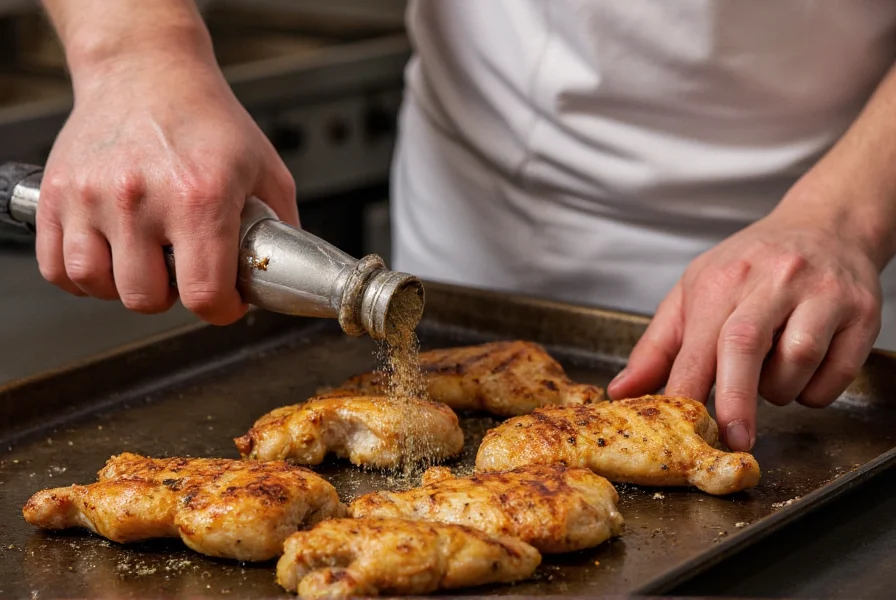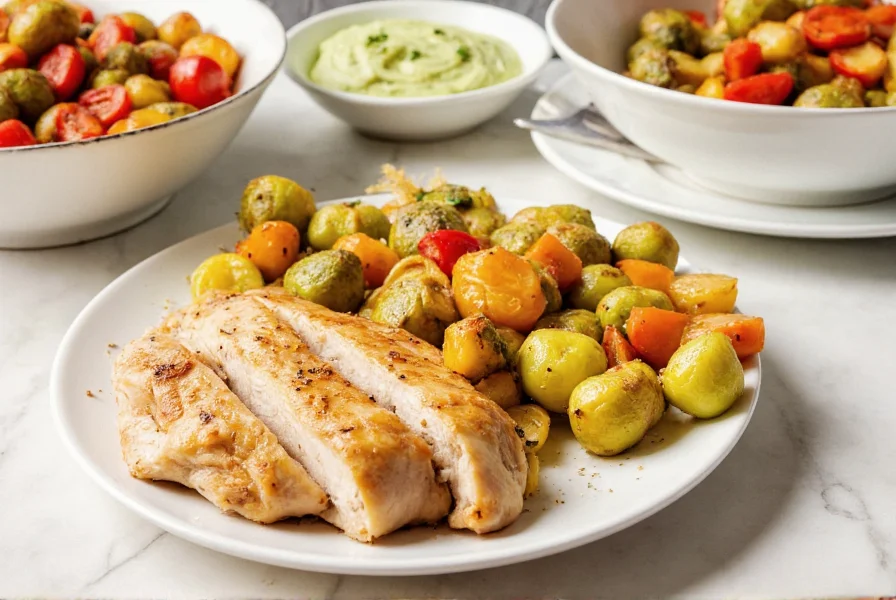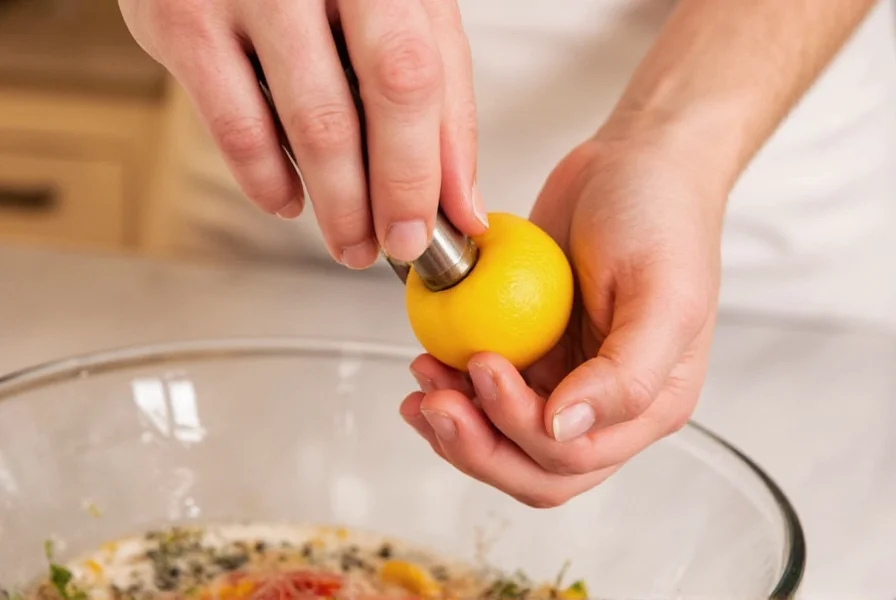Understanding how to properly implement the lemon pepper stepper technique can transform ordinary meals into restaurant-quality dishes with perfectly balanced citrus and pepper notes. Unlike simply sprinkling lemon pepper on at the end, this methodical approach ensures the seasoning penetrates throughout the cooking process, allowing flavors to develop and meld beautifully.
The Origins of Lemon Pepper Seasoning
Lemon pepper seasoning has evolved from a simple blend of dried lemon zest and cracked black pepper into a versatile culinary staple. Traditional lemon pepper recipes typically include:
- Freshly ground black pepper
- Dried lemon zest
- Salt (often sea salt)
- Garlic powder (in modern variations)
- Onion powder (in contemporary blends)
The "stepper" technique emerged from professional kitchens where chefs discovered that applying seasoning at strategic intervals produces superior results compared to single-application methods. This approach respects how different flavor compounds react to heat and time.
Implementing the Lemon Pepper Stepper Technique
The true lemon pepper stepper method involves three critical application points during food preparation. Each stage serves a specific purpose in flavor development:
| Application Stage | Timing | Flavor Impact |
|---|---|---|
| Base Layer | Before cooking (marinating stage) | Penetrates proteins deeply, creates flavor foundation |
| Middle Layer | Midway through cooking | Replenishes volatile compounds lost to heat, builds complexity |
| Finishing Layer | Immediately after cooking | Provides bright, fresh notes that contrast cooked flavors |
Detailed Step-by-Step Implementation
1. The Base Layer Application
For optimal results with the lemon pepper stepper technique, begin by creating a light coating of olive oil or melted butter on your protein or vegetables. This creates a sticky surface that helps the seasoning adhere. Use approximately one-third of your total lemon pepper seasoning blend, gently pressing it into the food's surface.
Allow proteins to rest with this base layer for at least 15-30 minutes before cooking. This resting period enables the seasoning to begin penetrating the outer layers. For best results when preparing chicken using the lemon pepper stepper method, refrigerate during this marinating phase.
2. The Middle Layer Application
During the cooking process—typically when proteins are about halfway cooked or vegetables have begun to soften—apply the second portion of your lemon pepper blend. For pan-seared items, this occurs when you flip the food. For roasted items, this happens about two-thirds through the cooking time.
This middle application is crucial in the lemon pepper seasoning technique as it replenishes flavor compounds that evaporate during cooking. The heat helps the new seasoning layer integrate with the developing flavors while preserving some of the brighter citrus notes.
3. The Finishing Layer Application
Immediately after cooking, while the food is still hot but off direct heat, apply the final third of your lemon pepper blend. This finishing touch provides a burst of fresh citrus aroma and a subtle heat that hasn't been altered by prolonged cooking.
For an enhanced lemon pepper stepper experience, consider adding a small squeeze of fresh lemon juice along with this final seasoning application. The acid brightens the overall flavor profile and complements the layered seasoning approach.

Common Mistakes to Avoid
Many home cooks make critical errors when attempting the lemon pepper stepper method. Understanding these pitfalls ensures better results:
- Over-seasoning: Using too much seasoning at any stage overwhelms the dish. Stick to the one-third allocation per stage.
- Incorrect timing: Applying the middle layer too early causes flavor compounds to burn off; too late prevents proper integration.
- Poor quality seasoning: Pre-made blends often contain fillers. For authentic lemon pepper stepper results, make your own blend with fresh ingredients.
- Skipping the resting period: The base layer needs time to penetrate; rushing this step diminishes flavor depth.
Crafting the Perfect Lemon Pepper Blend
While store-bought blends work in a pinch, creating your own seasoning elevates the lemon pepper stepper technique significantly. The ideal homemade blend includes:
- 2 tablespoons freshly grated lemon zest (dried at low temperature)
- 1½ tablespoons freshly cracked black pepper
- 1 teaspoon fine sea salt
- ½ teaspoon garlic powder (optional)
- ¼ teaspoon onion powder (optional)
To dry lemon zest properly for your lemon pepper seasoning technique, spread freshly grated zest on a parchment-lined baking sheet and place in an oven set to its lowest temperature (ideally 170°F/75°C) for 1-2 hours until completely dry but not browned. This preserves the volatile oils that give lemon its distinctive aroma.
Variations for Different Cuisines
The beauty of the lemon pepper stepper approach lies in its adaptability across culinary traditions. Consider these variations:
- Mediterranean twist: Add dried oregano and a pinch of red pepper flakes to your blend
- Asian fusion: Incorporate lemon grass powder and white pepper instead of black pepper
- Cajun style: Mix in paprika and cayenne for a spicy lemon pepper stepper variation
- Herb-enhanced: Blend with dried thyme or rosemary for more complex flavor profiles
Perfect Pairings for Lemon Pepper Stepped Dishes
Dishes prepared using the lemon pepper stepper technique pair beautifully with specific sides and beverages:
- Grilled lemon pepper stepped chicken: Serve with roasted asparagus and wild rice pilaf
- Lemon pepper stepped salmon: Pair with quinoa salad and steamed green beans
- Vegetable medley using lemon pepper stepper: Complement with couscous and tzatziki sauce
- Lemon pepper stepped shrimp: Serve over linguine with a light garlic butter sauce

Storage and Shelf Life Considerations
Proper storage maintains the integrity of both your homemade seasoning blend and dishes prepared with the lemon pepper stepper technique:
- Store homemade lemon pepper blend in an airtight container away from light and heat
- Use within 2-3 months for optimal flavor (the volatile citrus oils degrade over time)
- Never store seasoning blends in the refrigerator (moisture causes clumping)
- Cooked dishes using the lemon pepper stepper method maintain best flavor when consumed immediately
- If reheating, add a small amount of fresh lemon juice to revive the citrus notes
Troubleshooting Common Issues
When implementing the lemon pepper stepper technique, you might encounter these issues:
- Bitter flavor: Caused by using lemon pith along with zest. Always remove white pith when grating.
- Overpowering pepper: Use freshly cracked pepper rather than pre-ground for better flavor balance.
- Flavor not penetrating: Ensure proper oil coating before base layer application and sufficient resting time.
- Seasoning burning: Reduce heat during middle layer application or use a lighter hand with the seasoning.











 浙公网安备
33010002000092号
浙公网安备
33010002000092号 浙B2-20120091-4
浙B2-20120091-4